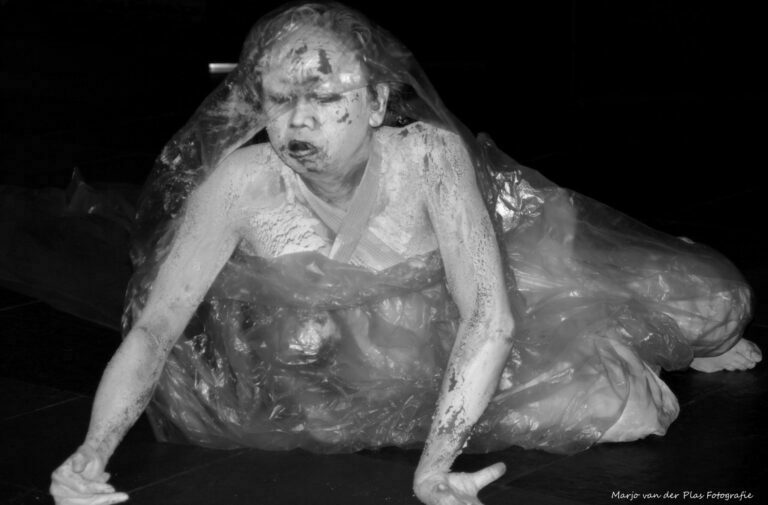2016 performance art Philemon Mukarno
Nudity as Radical Truth: Performances in 2016
Nakedness shattered all illusions on stage in 2016. Through exposed skin, Philemon Mukarno invited audiences to look underneath, moving far beyond superficial gaze. Each new work became a space for radical transparency—a stage where bodies became metaphors for vulnerability and resilience.
“Recycled in Death”: A Two-Hour Communion
“Recycled in Death,” a collaboration with Aga Wi at Amsterdam’s Compagnietheater, refused to hide from mortality or intimacy. Bodies onstage surrendered to a flow that blurred boundaries between performer and spectator. Layers of clothing—literal and symbolic—were shed, emphasizing how the naked form can become an altar for truth. This performance was less about showing and more about revealing—revealing frailty, connection, and the perpetual cycle of beginnings and endings. Without the curtain of costume, a raw, spiritual honesty permeated the theatre.
“Ecce Homo”: Becoming Human, Becoming Vulnerable
“Ecce Homo” stripped humanity to its bones, urging the audience to ask: what does it mean to be seen? Here, nudity wasn’t just skin-deep. Mukarno’s body became a canvas, every movement an act of survival and surrender. This work transformed the stage into sacred ground, where nakedness was both shield and offering. The performance’s thirty short minutes bent time, stretching the vulnerable present into eternity.
Breaking Boundaries: Nudity as Connection
Through these performances, nudity lost its taboo and found purpose. It built a daring intimacy with the audience—one that was at once unsettling and irresistible. Mukarno’s naked performances harnessed a kind of magic: fragility became power, silence became dialogue. No wall separated performer from witness; all were involved in the ceremony of exposure and acceptance.
Lasting Impact: 2016’s Lessons in Vulnerability
Every act of undress was a call to collective courage. Mukarno’s 2016 works did not seek approval—they sought truth. By placing the naked body at the center of each piece, he posed questions about identity, memory, and trust, touching a nerve deep within contemporary art. These works transformed the theatre into a sanctuary where vulnerability, in its rawest form, could finally speak.






